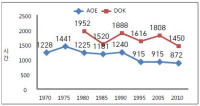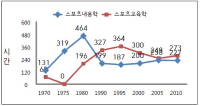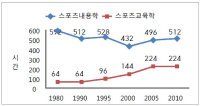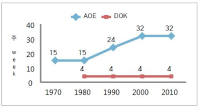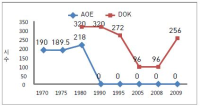Purpose This purpose of this study was to understand how physical education can contribute to healthy emotions and activities of human beings. Methods We analyze Eva Illouz's emotional capitalism theory, the position and role of emotions in Spinoza, and Durkheim's theory of religious sociology. Results Illouz shows that emotions are coordinated by rationality through the analysis of emotional capitalism, and that expressions of natural emotions are restricted and controlled even in the area of intimacy. In Spinoza, emotions are divided into three emotions: joy, sadness, and desire as concepts of body movements. Emotions reveal that they are closely related to human activity, and emotions of joy are calculated for human emotional development Emphasize the need to organize meetings of possible bodies. Durkheim argues that while society is placed in a religious position, society is the subject of individual praise and the reality of baptizing individuals into morality. At this time, festivals and rituals reveal individuals to be a powerful mechanism that leads to devotion to society and strengthens individual’s sense of community and morality. Conclusions Making physical education classes as festivals enhances students' sense of community. It can also be an activity that allows students to have healthy moral and emotional energy.
Purpose The purpose of this study was to explore the concept of physical education redesign. Methods Studies on curriculum redesign, physical education curriculum redesign and the revised 2015 physical education curriculum were collected and analysed. Results First, three different types of curriculum redesign were discussed. Second, there was no clear concept of physical education redesign. Third, both ‘learning content area’ and ‘standard achievement’ were related to the physical education curriculum redesign. Conclusions Two different aspects of physical education curriculum redesign emerged. Establishing the clear concept of physical education curriculum redesign and presenting the concept in the next national physical education curriculum were suggested.
Purpose The purpose of this research is to provide implications for the study of the physical education curriculum in Korea and China by comparatively analyzing the revised high school physical education curriculum in the two countries. Methods Using Bereday(1964)’s four steps of comparison model in education, this study focuses on the format and content of the general high school physical education curricula of Korea and China, each curriculum having been revised respectively in 2015 and 2017. Results First, in terms of format, both countries consider PE a necessity and share similarities in regard to course structure, credit allocation and document format. Nevertheless, though both countries are oriented toward competency-centered education, there are some differences with respect to official education curriculum documents, numbers of subjects and hours of study based on the reality and situation of each country. Second, in terms of content, both countries present various teaching methods and evaluation principles for the sake of acquiring core competence. However, the Korean curriculum prefers to advocate learning of the value of physical activity to achieve core competencies, while the Chinese curriculum prefers to focus on acquiring athletic skills and health knowledge for achieving core competencies. Conclusions After comparing physical education curriculum in both countries, two implications could be obtained. One is that the consistency problem in Korea should be solved between the core competency, the teaching and learning methods and evaluation standards. The other is that, in China, integrated value of physical education should be paid more attention and core competency as well as teaching and learning methods should be considered.
Purpose The purpose of this study is to suggest issues needed in the process of developing the next national physical education curriculum. Methods Data were collected from three different physical education curricula including the 2007 revised physical education curriculum, the 2011 physical education curriculum based on the 2009 revised curriculum and the 2015 revised physical education curriculum. Results Three findings emerged. Firstly, there was no clear conceptual relationships between physical activity value and subject competency. Secondly, the way in which physical activity value works as learning content area cannot offer helps to set the level of subject competency and to design physical education lessons that based on the subject competency. Lastly, the 2015 revised physical education curriculum has low level of clarity, usability and readability. Conclusions This study suggests the three different findings as issues that should be discussed in the development of the next physical education curriculum.
PURPOSE This study aims to analyze elective courses in overseas physical education curricula and explore directions to improve the national physical education curriculum. METHODS Physical education curricula from the Ontario Ministry of Education and New South Wales Department of Education, and an administrative announcement book of the 2022 Revised Physical Education Curriculum were collected and analyzed. RESULTS The Ontario physical education curriculum offers a range of elective subjects that fit students’ need to enter universities and colleges. It also has a systematic curriculum flowchart within elective courses. The NSW physical education places importance on learning life skills and offers content-endorsed courses that comprises core studies and optional modules. CONCLUSIONS This study clarified the differences between the learning content of elective subjects and suggested the necessity of developing plans to provide students with effective course path.
This study aims to identify the characteristics of character education contained in National Physical Education Curriculum in terms of contents and construction, problems and limitation, and improvement plans by analyzing character texts such as the concept, expression mode, and context of character in goals, contents, teaching and learning methods, and evaluation of Physical Education Curriculum in accordance with the 2009 Revised National Curriculum. For criteria of analysis, character and character education were defined in a conditioning manner in terms of emotion, sociality, and morality, which grasped the implication based on the concept, meaning, and context of character text by using content analysis. The character education of National Physical Education Curriculum has currently compensated the concept of creativity‧character, and core competency as of the 2007 National Physical Education Curriculum, defining the concept of character as desirable personality, sociality, and morality, and setting up self management ability and interpersonal relationship ability as category. However, herein identified were ambiguity of the meaning between character and other concepts and ambiguity of the meaning boundary of detailed virtue in the concept of character in terms of the concept and the range of character, insufficiency of school-level systemicity and sequence between curriculum items in terms of character text selection and organization, and deficiency of the character education principles of physical education and practical teaching and learning methods of it in terms of character education methods. For next revision of National PE Curriculum, a full consideration is required for providing principles of teaching and learning methods on character and evaluation cases based on research on conceptualization of physical character, research on suitability and sequence of content subsystem of character, and cases of field practice.
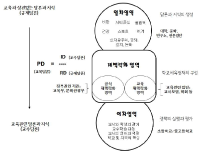
Drawing on Bernstein theory (1990, 1996) of pedagogic discourse, this study is aimed at exploring the construction of pedagogical meaning in physical education policy in Korea and providing critical implications for the development of policies for physical education and school sport. Both open-ended questionnaires (n=22) and in-depth interviews (n=9) were conducted. The collected data was commissioned by an inductive data analysis to look at patterns of regulative discourses embedded with physical education policy influencing on teachers’ educational practice. This study identified three main discourses constructing and constituting policies; sport, moral, and health. Sport discourse was the most dominant through the policy, in which two sub-discourses were central: ‘competition’ and ‘exclusion.’ Moral discourse had a strong connection with ‘crime reduction’ and ‘academic achievement.’ The structure of health discourse alleged increase in youth physical inactivity associated with sedentary living leads to an obesity epidemic. This study argued that there were significant dangers which dominant regulative discourses created a limited universe of possibilities for physical education. Therefore, we must not lose sight of the powerful discourses produced in the primary field, which have an impact on shaping forms of policy and practice in physical education. Furthermore, we need to examine in detail forms of physical education practice in order to achieve alignment in the school practice with current dominant discourses.

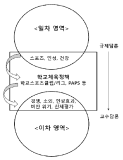
There has been a growing advocacy for a critical approach to physical education teacher education(PETE) in the era of globalization and ubiquitous society. Drawing on critical pedagogy, the purpose of this paper was to explore the meanings and methods for developing critical professionalism in PETE through identifying the definitions and features of critical professionalism. The notion of critical professionalism includes four crucial components: critical reflection, social sensitivity, critical thinking, and practicability. This paper suggests an inquiry-oriented physical education teacher education to develop per-service teachers’ critical professionalism in terms of providing a range of teaching methods centered on microteaching, discussion-based lessons, critical reading and writing, and using media materials. Building on findings, it was concluded that there is a need of programs for the development of policy literacy understanding complex social and cultural contexts of school physical education. Furthermore, PETE should focus on the processes of critical reflection on the teaching and learning act itself within wider social contexts, by using an inquiry-oriented approach to PETE, which will contribute to fostering teachers’ critical capacities needed to guard the educational aims of physical education against political interference.
PURPOSE This study aimed to explore the effective and pragmatic idea regarding the development of physical education teacher education (PETE) programs in China. These programs share both similarities and differences in China and Korea, and they are also discussed here. METHODS Six universities reflecting the regional specificities of Korea and China were selected following consultation with experts. Data collected through in-depth interviews, non-participatory observation, literature, and local documents were analyzed and interpreted by using the comparative analysis research method. RESULTS First, when comparing the curriculum, which was divided into liberal arts, major, and teaching subjects in both countries, the ratio of liberal arts and teaching subjects was similar in Korea following major subjects. As for China, major subjects came in first, followed by liberal arts and teaching subjects. Second, the relative pros and cons of preliminary sports teacher education in Korea and China were aimed at nurturing competent sports experts with both expertise and personality. They were generally similar in terms of content dimensions; however, they were found to be different in several areas. Particularly in the case of China regarding the teaching subject, practical subjects that were of pragmatic help to the school field were found to be relatively insufficient. Third, the implications for improving China's preliminary PETE were to emphasize the importance of personality in educational goals at the goal level, and as for the content level, it was necessary to replaced them with classes that could be of pragmatic use in the existing teaching method. Furthermore, at the methodological level, professional training of physical education teachers should be proposed, training them to cultivate character. Finally, more positive changes can be pursued if efforts at the environmental level are well-matched and improved. CONCLUSIONS To improve China's preliminary PETE program, it is necessary to enhance the environment and institutions using various teaching methods to cultivate expertise, such as practical aspects of university-field linkage and preliminary teacher personality education.
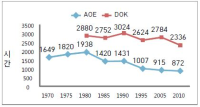
The aim of this study is to examine the directions of Physical Education Teacher Education (PETE) programs in Korea through the historical changes of each one PETE institute in England and Korea from the 1970s to 2010s based on academicisation. Document analysis and grounded theory were used to analyse historical sources and interviews. I identify four findings. First, the amounts of hours in curricula in both PETE courses have been reduced. Second, discipline knowledge in England was a first priority in the 1970s but has urgently reduced since the 1980s because of the growth and adoption of sport pedagogy. In Korea, discipline knowledge has still kept as a first priority for 40 years. However, professional knowledge in Korea has increased to enhance PETE since the middle of 2000s. Third, teaching experiences in England has increased by nearly double from 15 weeks to 32 weeks. In Korea, student have, and continue to participate in only four weeks of teaching experience. Fourth, education studies in England abolished in the 1990s. In Korea, they urgently increased in 2009. I conclude by confirming the need to study a structure and content of units of discipline knowledge and professional knowledge. I propose a system for selection of majors in the Department of Physical Education.

